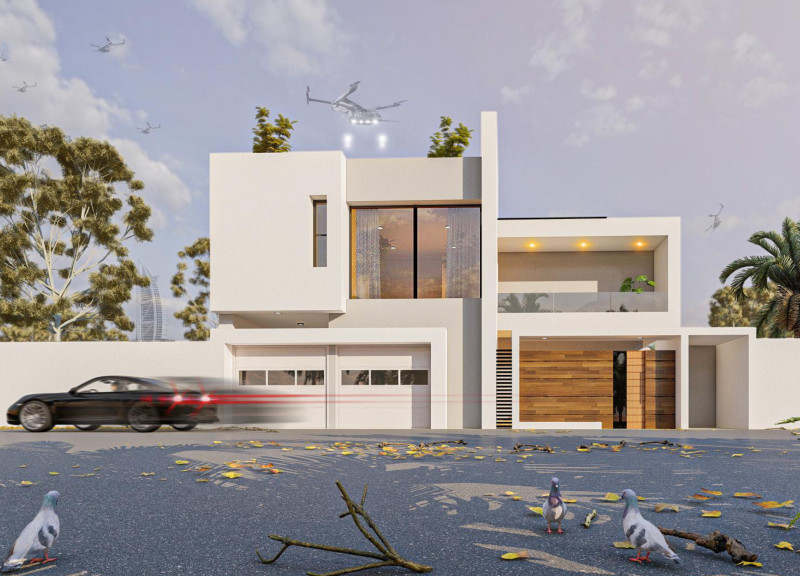5 key facts about this project
At its core, the project represents an invitation to explore the delicate balance between human activities and the natural world. It serves multiple functions, accommodating diverse needs and fostering connections among its myriad users. Spanning various spaces, from open communal areas to private niches, the architecture enhances social interaction while allowing for personal contemplation. The design encourages both collaboration and solitude, making it suitable for a range of activities, whether they be educational, recreational, or cultural.
The project pays close attention to its essential components, each contributing to the overall narrative of the design. The façade exhibits a thoughtful composition of materials that not only serves aesthetic purposes but also functions to improve energy efficiency. The selection of high-performance insulating glass strategically allows natural light to permeate the interior while minimizing passive heating, creating a comfortable atmosphere throughout the year. Additionally, the use of reclaimed wood and natural stone reflects sustainable practices, seamlessly connecting the architecture to its environmental context.
Significant architectural details can be found in various elements of the design. Expansive terraces and green roofs are integrated into the structure, promoting biodiversity and enhancing the microclimate of the area. These features allow the building to contribute positively to its surroundings, offering outdoor spaces that can be enjoyed by occupants and the community alike. The incorporation of architectural shading devices, which are both functional and visually appealing, plays a critical role in reducing solar gain while adding depth to the exterior lines.
Unique design approaches are evident throughout the project, particularly in the way it addresses issues of connectivity and accessibility. Thoughtfully designed pathways encourage movement through the space, creating a seamless flow that draws visitors into and around the building. The layout emphasizes transparency, with strategically positioned glass panels and openings that encourage visual connections both inside and out. This design approach not only enriches the user experience but also fosters a sense of belonging and inclusivity.
Moreover, the project effectively prioritizes sustainable strategies by incorporating renewable energy systems and water-efficient technologies. Solar panels positioned on the roof harness natural energy, enhancing the building's energy independence. Rainwater harvesting systems are designed to minimize wastage and encourage responsible resource management, reflecting a commitment to sustainable living practices.
The architectural considerations extend beyond mere functionality. There is a careful balance between public and private spaces, ensuring that various needs are catered to while maintaining a sense of community. Indoor spaces are arranged to promote fluidity and flexibility, accommodating changing uses over time. This adaptive design fosters a sense of ownership among users and contributes to the building's longevity and relevance.
As a whole, the project stands as a testament to modern architectural practices, weaving together innovation, sustainability, and community into a cohesive design narrative. Its ability to resonate with the surroundings while serving practical needs makes it a valuable addition to the urban fabric. Those interested in a deeper understanding of the project's architectural plans, sections, and designs are encouraged to explore the presentation further, where architectural ideas are articulated through visual and conceptual frameworks. This provides an opportunity to appreciate the intricacies and thought processes that underpin this commendable architectural project.


























